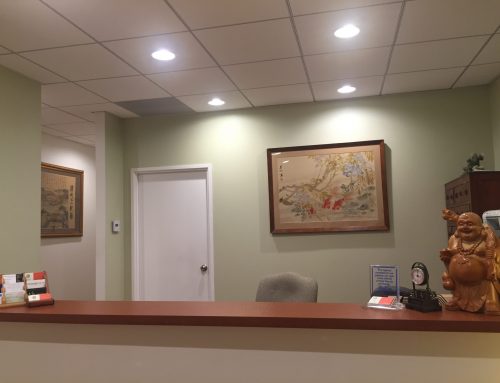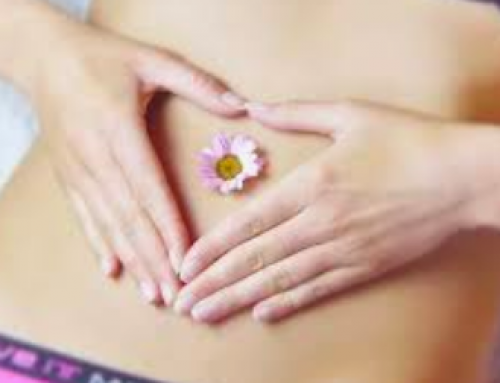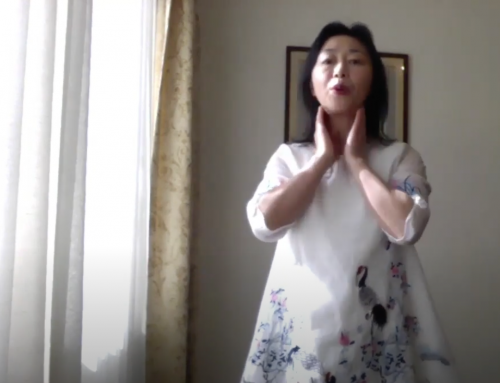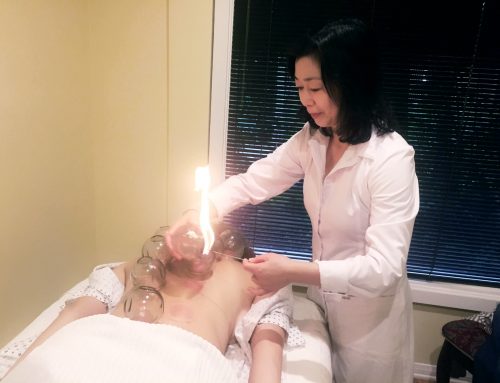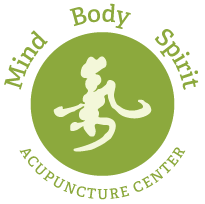Please join with me for New, Live Zoom Free Qi Gong/Tai Chi Classes on Wednesday/Fridays/Mondays 4/22/2020 from 5:30-6:30 pm
Follow me to practice the following exercises
1. Meridian Tapping Techniques for health and immune boost( 经络拍打功)
2. Six Unity Qigong ( 养生六合功)
3. Shaolin Six Harmony Qigong(少林六合功)
4. 8 Trigram 5 steps Taichi Routine ( 太极八法五步)
Dr. Jiling hu is inviting you to a scheduled Zoom meeting.
Topic: Traditional Chinese Healing qigong and Taichi Exercise
Time: 05:30 PM Pacific Time (US and Canada)
Every week on Mon, Fri, until May 15, 2020
May 4, 2020 05:30 PM
May 8, 2020 05:30 PM
May 11, 2020 05:30 PM
May 15, 2020 05:30 PM
Please download and import the following iCalendar (.ics) files to your calendar system.
Weekly: https://zoom.us/meeting/
Join Zoom Meeting
https://zoom.us/j/98579840792?
Meeting ID: 985 7984 0792
Password: 604079
Meridian tapping Techniques for chi cultivation and immune boost
Click here watch the video
- Rub the palms together until warm, then put your hands over your face and eye area, then “wash” your face with your hands, repeat 3 times
- Rub apart the eyebrow
- Rub the both side of inner canthus
- Rub the nose bridge
- Rub LI11(outside of both nostrils)
- Rub St2(directly below the pupil of the eye, in the depression at the infraorbital foramen)
- Rub Taiyang ( Temple area)
- Rub SJ21 ( Ear gate–in the depression anterior to the supra-tragus notch)
- SJ17 (Wind screen depression area in the posterior to back of earlobe)
- Rub points St7, ST6 (Masseter muscle area) on the side of your cheek on TMJ joint and biting muscle area)
- Rub LI18, SI16 (posterior and interior of SCM on the nape)
- Pull and rub on ear apex
- Pull and rub the middle of auricle
- Pull down and rub ear lobe
- Tapping on the inside of arms (3 hand yin meridians) away from shoulder to hand
- Tapping outside of arms (3 hand yang meridian) away from hand to shoulder
- Tapping inside of leg ( 3 three yin meridian) from ankle to inguinal area
- Tapping outside of leg (food yang meridian) from hip to ankle
- Tapping on the LI4 (Tiger Mouth) ( crossing tap on the web between thrum and index finger)
- Cross tapping Extra points Ba Xie ( eight pathogen- crossing tap webs between fingers)
- Tapping with fist on the Lung1 (Central palace-top of chest where meets the shoulder)
- Tapping on Liver 14 (Gate of Hope– 6th intercostal space under the breast)
- Taping on the Ren22-Ren17 ( Window of sky to sea of qi –Finger tapping along the sternum from throat area down to the center of chest)
- Tapping on ST25 (Heavenly Pivot- about fist width from umbilicus ) and UB23 (Kidney Hollow-kidney area-) front side and backside at same time
- Tapping on the ST30 (surging qi point- inguinal area)
- Tapping on the GB31 (Wind City–side of thighwhere the tip of the middle finger touches)
- Tapping on GB21 (Shoulder Well-Top of shoulder)
- Tapping on DU14 (Nape area) with both hands
- Chop on LI10 (Arm 3 miles-forearm near elbow)
- Fist tapping on St36 ( fist distance below the center of knee cap)
- Finger Tap the SJ5 (external door-Lung) on both sides
- Finger n the PC6 (internal door-heart) on both sides
- Shake arms 9 times x 3
Function: Acupressure and Meridian tapping helps body and mind connection Stimulating the meridian points through tapping can reduce physical tension and emotional stress, relieve your stagnant energy, and strength body resistant. In TCM, we believe it promotes qi and blood, unblock stagnation in the channel and collaterals, expel pathogen and tonify vital qi.
Get ready. Relax the whole body, include neck, shoulder, arm, even fingers. Standing maturely, or you may also sit if you prefer. Using gentle but powerful force, even pace! Neither too soft or too hard.
The Ancient health cultivation qigong exercises.
Daoyin Liu He Gong ( Six Unity Gigong):
Click here to watch video
Preparation: Relax body and mind, stand naturally, listening your own breathing or rhythmic sounds. Slightly curl up your mouth corner , breath natural and have a peaceful mind
- Ascending and descending, opening and closing—bring clear yang qi into the body and remove turbid qi out
- Exhale the old and inhale the new—in six directions-Exhale the turbid qi and inhale fresh qi to achieve internal qi activity to unblock the meridian and harmonize the qi and blood
- Ascending the clear and descending the turbid-regulate internal organs, mainly exercise psoas, abdominal diaphragm and gastric muscles and guide qi flow, and exert a gentle massage on Liver, Spleen, Stomach and Intestines
- Turn the body to look back—strength psoas, ligament and spine, and improve functions of spine, strength the bone and Dai meridian, fortify the spleen and kidney
- Relax the fascia and stretch the body—Lateral pulling and extension of lower back and upper limb muscles, to unblock gallbladder meridian, alleviate back muscle tension and benefit the joints
- Leap on the horse to draw a bow—balance front and back, left right, up and down, and benefit the head, neck, limb, waist and abdomen, regulate three burner, unblock the water passage.
- Closing posture: Inducing qi to its origin.
The Baduanjin qigong
The Baduanjin qigong(八段錦) is one of the most common forms of Chinese qigong as exercise.[1] Variously translated as Eight Pieces of Brocade, Eight-Section Brocade, Eight Silken Movements or Eight Silk Weaving, the name of the form generally refers to how the eight individual movements of the form characterize and impart a silken quality (like that of a piece of brocade) to the body and its energy. The Baduanjin is primarily designated as a form of medical qigong, meant to improve health
Standing Ba Duan Jin
Click here to see watch video
Two Hands Hold up the Heavens (Shuang Shou Tuo Tian)
This move is said to stimulate the “Triple Burner” aka “Triple Warmer” or “Triple Heater” meridian (Sanjiao). It consists of an upward movement of the hands, which are loosely joined and travel up the center of the body.
Drawing the Bow to Shoot the Eagle / Hawk / Vulture
While in a lower horse stance, the practitioner imitates the action of drawing a bow to either side. It is said to exercise the waist area, focusing on the kidneys and spleen.
Separate Heaven and Earth
This resembles a version of the first piece with the hands pressing in opposite directions, one up and one down. A smooth motion in which the hands switch positions is the main action, and it is said to especially stimulate the stomach.
Wise Owl Gazes Backwards or Look Back
This is a stretch of the neck to the left and the right in an alternating fashion.
Sway the Head and Shake the Tail
This is said to regulate the function of the heart and lungs. Its primary aim is to remove excess heat (or fire) (xin huo) from the heart. Xin huo is also associated with heart fire in traditional Chinese medicine. In performing this piece, the practitioner squats in a low horse stance, places the hands on thighs with the elbows facing out and twists to glance backwards on each side.
Two Hands Hold the Feet to Strengthen the Kidneys and Waist
This involves a stretch upwards followed by a forward bend and a holding of the toes.
Clench the Fists and Glare Fiercely (or Angrily)
This resembles the second piece, and is largely a punching movement either to the sides or forward while in horse stance. This, which is the most external of the pieces, is aimed at increasing general vitality and muscular strength.
Bouncing on the Toes
This is a push upward from the toes with a small rocking motion on landing. The gentle shaking vibrations of this piece is said to “smooth out” the qi after practice of the preceding seven pieces or, in some systems, this is more specifically to follow Sway the Head and Shake the Tail.
8 Trigram 5 steps Taichi Routine ( Ba Fa Wu Bu-Taichi 13 postures)
Click here to see watch video
- Ward Off – Peng
- Roll Back – Lu
- Press – Ji
- Push – An
- Pull Down – Tsai
- Split – Lieh
- Elbow – Chou
- Shoulder – Kao
- Advancing Steps – Jin
- Retreating Steps – Tui
- Stepping to the Left Side – Ku
- Stepping to the Right Side – Pan
- Settling at the Center – Ding
The Thirteen Postures (8 Gates and 5 Steps) are referred to in various ways by T’ai Chi Ch’uan authors. Some call them the “Thirteen Powers = Shi San Shi.” Others call them the Thirteen Postures, the Thirteen Entrances, the Thirteen Movements, or the Thirteen Energies.
The most frequent references to the 13 Postures are in the writings and teaching in the Yang Style of T’ai Chi Ch’uan.
The first Eight Gates or Eight Entrances (Ba Gua or Pa Kau) can be divided into the Four Primary Hands (Ward Off, Pull Back, Press and Push) and the Four Corner Hands (Pull Down, Split, Elbow and Shoulder).
All thirteen postures, or course, involve some movement of the feet and legs, but the final Five Gates involve more extensive movements of the feet and legs. These are collectively referred to as the Wu-hsing – Five Elemental Phases of Change. The final five gates are associated with the 5 elementary processes (Wu-xing) involving: metal, wood, water, fire, and earth.



